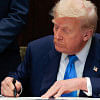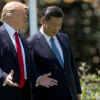Trump tariffs: are they really reciprocal?

The US president issued an executive order on 2 April 2025 to impose reciprocal tariffs, comprising two main actions. First, a 10 percent baseline tariff on all imports—on top of existing tariffs—effective 5 April 2025. Second, country-specific tariffs on imports from 53 targeted countries, effective 9 April. However, if more than 20% of a product's value is of US origin, only the non-US portion will be taxed. There are also exceptions—goods already in transit, items listed in Annex II (e.g., steel, aluminium, automobiles, copper, pharmaceuticals, semiconductors, lumber, critical minerals, and energy products), imports from Belarus, Cuba, North Korea, and Russia, and products from Canada and Mexico under USMCA rules. These actions signify a clear deviation from WTO's most favoured nation (MFN) principle that has been in place since the GATT came into force in 1947.
To understand the rationale behind these tariffs, one must assess the stated objectives and how the so-called "reciprocal tariffs" were determined. According to the executive order, persistent US trade deficits are largely caused by the lack of reciprocity in bilateral trade—especially via disparate tariff rates and non-tariff barriers that disadvantage US manufacturers abroad. The order highlights that the average tariff imposed by the US is considerably lower than that of the EU, India, Brazil, Vietnam, and China. Product-level comparisons show similar results. The order also blames trading partners for blocking multilateral tariff negotiations and maintaining market access barriers that limit US exports.
On 13 February 2025, prior to issuing the order, the president signed a memorandum titled "Reciprocal Trade and Tariffs," directing a review of non-reciprocal trade practices and their links to the trade deficit. The review considered tariffs imposed on US products, discriminatory taxes (like VAT), non-tariff barriers, currency manipulation, and other policies deemed harmful to US competitiveness which apparently led to the current tariff measures.
While the 10% baseline tariff appears aimed at reducing the overall trade deficit, it does not reflect any reciprocal framework. More critically, the way country-specific reciprocal tariffs are calculated raises serious questions. Supposedly, the formula used, estimates tariff rates needed to bring bilateral trade balance to zero. The proposed tariffs are in fact only half of these estimates, termed as "discounted reciprocal tariffs." This approach incorrectly assumes that trade balance is a function of tariff symmetry, ignoring factors such as comparative advantage and service trade.
For example, the US and Israel have had a free trade agreement since 1985, yet the US still runs a goods trade deficit with Israel, while enjoying a surplus in services and investment. It is implausible that Israeli trade practices amount to a 34% tariff burden on US goods. Similarly, US exports to Bangladesh face a 15% import-weighted duty, while US imports face only 3.32% average duty in Bangladesh. No known barrier specifically targets US goods, making the idea of a 74% "reciprocal tariff" on Bangladeshi exports unfounded. The so-called reciprocal tariffs are merely tools to target trade deficits, not measures to reflect actual reciprocity in trade practices.
Dr. Mostafa Abid Khan is former member of Bangladesh Trade and Tariff Commission

 For all latest news, follow The Daily Star's Google News channel.
For all latest news, follow The Daily Star's Google News channel. 










Comments